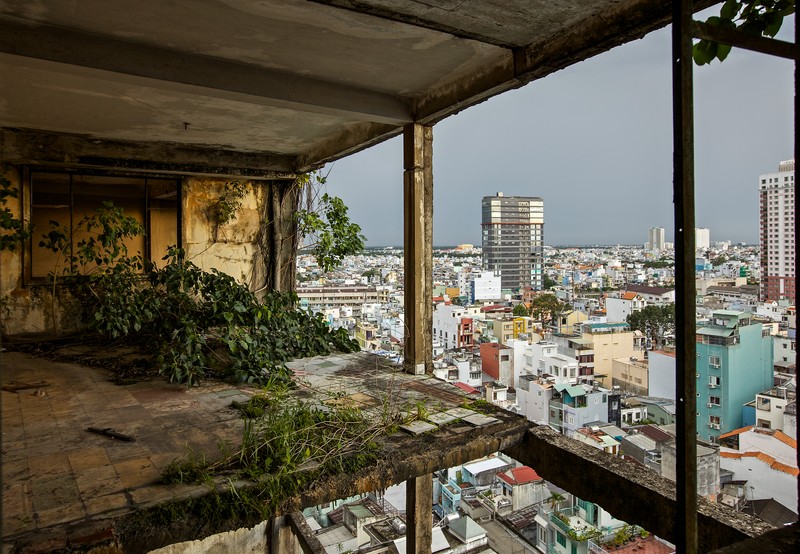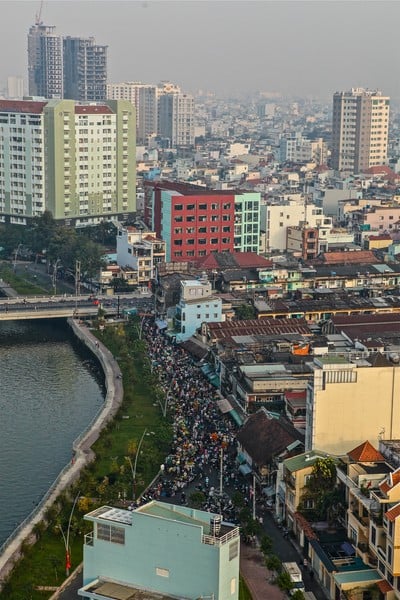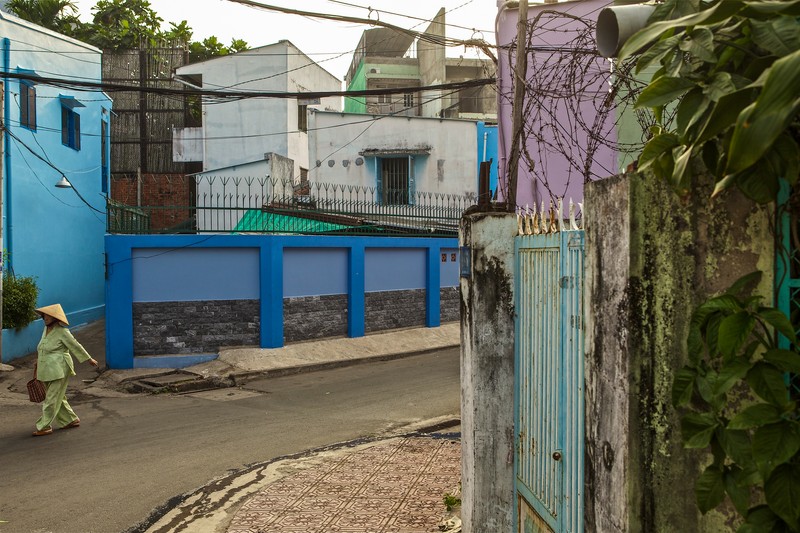Saigon is expanding at breakneck speed. In order to learn more about what might happen, what will happen, and what should happen, Oi spoke with a number of informed, invested, and expert sources on Saigon’s progress, development and identity.
Our expert panel:
Andrew Currie
Co-Founder & Managing Director of
OUT-2 Design & Workplace-Asia
www.OUT-2.com
Archie Pizzini
Design Principal
HTA+pizzini In-Situ Architects
www.htapizzini.com
Hoanh Tran
Design Principal
HTA+pizzini In-Situ Architects
www.htapizzini.com
Lam Dang
Legal Consultant
Matthew Young
Principal
GroupGSA
www.groupgsa.com
Mel Schenk
Architect
Tim Doling
Author
www.historicvietnam.com
Hoanh: The identity of Saigon is made up of an accumulation of many different layers, many different versions of one city. The Saigon we know is actually not very old; it begins with the French colonial architecture largely because what was built before was built from wood and did not last or was razed by French urban planners. So we have layers of early and late French colonial, and generally speaking, these buildings have a beautiful, human scale, and well adapted to the climate.
Mel: The French colonial architecture comes out of an agricultural age, when economies and their buildings were designed around agricultural production. The modernist era that followed comes out of the industrial age. From Art Deco to Modernism, it still has links to French architecture, namely Le Corbusier, but it’s on a mass production scale and a complete departure from the agricultural identity. Local architects took the new concepts and made them their own; the buildings from this period are truly Vietnamese modernism – from the public facilities down to the shophouses.
Also, unlike Thailand and Cambodia, where many buildings took their architectural instruction from religion, with the exception of Hue and the Cham areas, most of Vietnamese architecture was and remains very eclectic, and very present and future oriented.
Matthew: The French colonial architecture gets the most attention today. Why is it more important than what came before or after this period? It was a period of 70 years or so, but it seems to represent or relate to a notion of affluence, or succeeding to the international stage. Conversely, some of the Soviet architecture that came later is very interesting from an architectural point of view, but it rarely gets attention because it is tied to a different and less well-regarded time.
Andrew: There is such nostalgia for the French style that even up to ten years ago, when clients would say they wanted a contemporary Vietnamese building, what they really meant was they wanted French colonial. It is changing now, with the younger local architects coming onto the scene wanting something more youthful and exuberant, and having seen what others are building around the world.
Archie: Many colonial buildings were replaced by modernist buildings during the building boom of the 1960s and 1970s. At the time, Saigon was a small city, low to the ground, and visually, it welcomed individual interpretation. Modernist architecture actually facilitated this. The new modernist buildings of the 1950s, 1960s and 1970s made great use of space and shade and ventilation – this was all pre-air-conditioning – and Saigon’s visual identity began to separate from some other parts of Vietnam.
Matthew: As it should have. Vietnam has different topography, weather, ethnicities and each influences the types of structures in a particular area. Hanoi has four seasons, Saigon barely has two; they should differ.
Archie: After 1975 there was still a period of informal growth. In spite of economic constraints, buildings grew room by room, with modest, individual spaces added onto the French and American buildings. It was a very organic architectural period, very ad-hoc, very personal. For the larger projects, there was the importation of Soviet style architecture.
Mel: As Saigon settled into peace, aspirations rose. From temporary shelters to single story homes and then as families grew, so did the height of the home. The point being, people did not move, they simply added on and added up. The basic structure, which still dominates today, was four meters by ten or twenty. It is an efficient structure, with no need for hallways, and reflects the innate sense of design the Vietnamese have. The personality was in the façade and the interior design.
Matthew: The pre- Doi Moiarchitecture you see in Saigon is almost hard to call modernist. The ideals behind modernist architecture – mass production, age of machinery – don’t represent what was being built. Saigon’s modernism is so bespoke, so personal, and there is so much exploration of form, that it almost reminds me more of the Arts & Crafts style that blended being modern with being distinct.
Andrew: These tube houses, four meters by 20 or 30, didn’t allow for light on the sides. Unlike similar typologies in the region, modern Vietnamese tube houses gave little thought to the incorporation of courtyards and other open spaces, everything was covered so as to show it was completely used space and therefore more valuable if ever the property was reclaimed. The light came down the center around the staircase, which works for up to five stories. You could make the argument that the tube house is the most representative Saigonese building, because local architects have been redesigning this same type of rectangle over and over and therefore have become experts in its design and potential. They’re still interpreting it, improving it, keeping it relevant and it will continue to be a key part of the visual landscape of Saigon.
Hoanh: So you had around 200 years of layering, basically up until the present, post Doi Moi period. This is the identity of Saigon: a fabric of two centuries worth of cultures, styles, improvisations and local interpretations, all woven into a completely unique visual narrative.
For other articles on this series, click here.
IMAGES BY PATRICK CARPENTER






